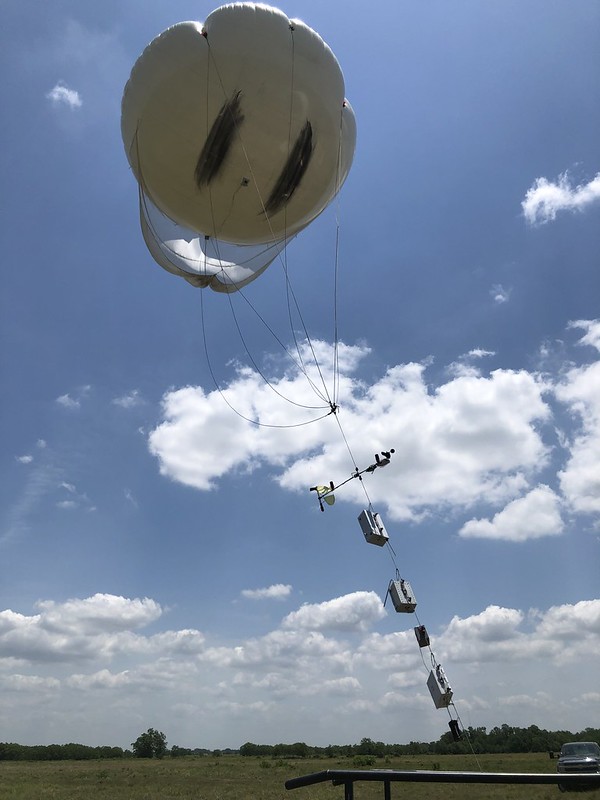New ARM Tethered Balloon System Projects Announced
Published: 13 October 2023
FICUS program awardees will rely on ARM/EMSL user facility capabilities

Two research projects starting this month will integrate capabilities of the Atmospheric Radiation Measurement (ARM) user facility and Environmental Molecular Sciences Laboratory (EMSL) with the goal of improving earth system models.
In December 2022, ARM and EMSL—both U.S. Department of Energy Office of Science user facilities—opened a call for collaborative research applications through the Facilities Integrating Collaborations for User Science (FICUS) program. Since 2014, the FICUS program has enabled ambitious research by providing access to specialized expertise and instrumentation from multiple user facilities.
Haofei Zhang of the University of California, Riverside (UCR), and Rajan Chakrabarty of Washington University in St. Louis are leading the selected projects for fiscal year 2024. Their projects will use ARM and EMSL capabilities to study land-atmosphere processes and aerosol-cloud interactions.
Zhang is leading a field campaign to collect vertically resolved aerosol samples during tethered balloon system (TBS) flights at ARM’s Southern Great Plains atmospheric observatory. Researchers will analyze the samples using EMSL’s nanospray desorption electrospray ionization coupled to a high-resolution mass spectrometer and UCR’s ion mobility spectrometry mass spectrometer. The results could provide key insights into aerosol-cloud interactions and help understand their effects on aerosols and climate.
Chakrabarty’s project will provide the vertical distribution of physicochemical properties of individual atmospheric particles collected by ARM’s TBS during the 2021–2022 TRacking Aerosol Convection interactions ExpeRiment (TRACER) in the Houston, Texas, area. The results of this research will provide critical feedback for further development and evaluation of particle-resolved atmospheric models.
Since the first ARM/EMSL call was announced in January 2021, eight projects have been chosen for support through the FICUS program.
ARM Project Aims to Bridge Sensing Gap in Trace Gas Monitoring
At the same time at the ARM/EMSL FICUS call, ARM held its own call for TBS proposals.
Out of that call, Peter Schwindt of Sandia National Laboratories in New Mexico will lead an 11-day campaign at the Southern Great Plains observatory in September 2024. Schwindt’s campaign will use dual-comb spectroscopy (DCS), a laser-based technique, to monitor trace gases at high spatial and temporal resolutions.
The Sandia team will collaborate with scientists from the National Institute of Standards and Technology to use DCS systems to detect and quantify trace gases over kilometer-length scales. While this is typically done horizontally near the ground, Schwindt’s campaign will send a laser beam from the ground to a retroreflector attached to an ARM TBS, enabling the first vertical DCS measurements collected over several hours across the atmospheric boundary layer. This work could lead to future applications of vertical DCS, including use of such trace gas measurements across the boundary layer in atmospheric models.
Look for information coming this winter about new FICUS/TBS calls.
Keep up with the Atmospheric Observer
Updates on ARM news, events, and opportunities delivered to your inbox
ARM User Profile
ARM welcomes users from all institutions and nations. A free ARM user account is needed to access ARM data.


















